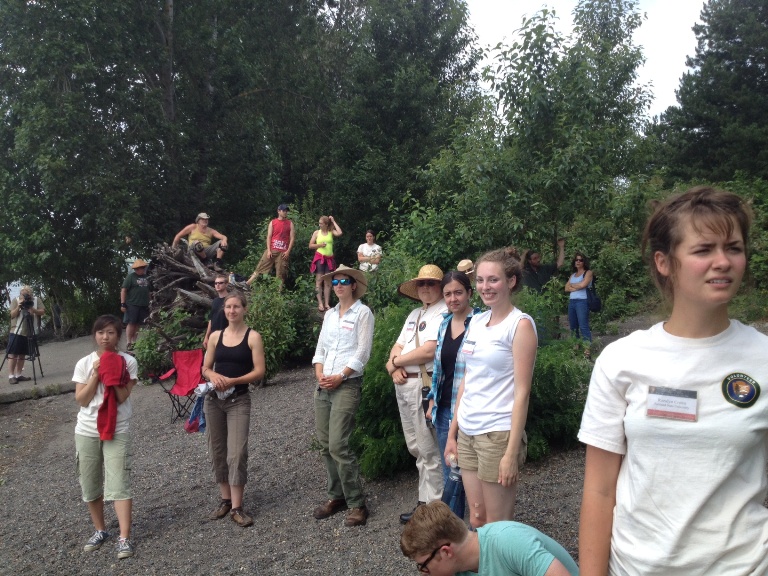Today the Public Archaeology Field School received a visit from the Oregon State University Field School. The OSU Field School is working on the Manson-Newell farmstead site in the Champoeg State Heritage Area.
Champoeg, located in northeastern Oregon, was the site where many French-Canadian fur trappers employed by the Hudson's Bay Company at Fort Vancouver retired to become farmers. In the mid-19th century, the area was settled by Oregon Trail migrants.
In the photo below, OSU and Fort Vancouver Field School students learn about blacksmithing methods from Dennis Torresdal, a Fort Vancouver NHS volunteer and former president of the Oregon Archaeological Society. Learning about the way that metal objects were made at Fort Vancouver helps our field school students better understand blacksmith-made artifacts they find in the field.

On Tuesday, July 17, Canoe Journey 2012 stopped at Fort Vancouver and was greeted by our Field School students, seen here. Canoe Journey is a very special event for our region, during which canoes from the Cowlitz, Warm Springs, Snohomish, Clatsop-Nehalem, and Snoqualmie tribes travel down the Columbia River on their way to Squaxin Island in South Puget Sound. To learn more about this event, see this article from our local paper, The Columbian.

Also on Tuesday, National Park Service Archaeologist Elaine Dorset taught the Field School students about methods for collecting sediment samples. Elaine is a specialist in archaeological pollen analysis and garden archaeology.
Sediment samples are uncontaminated collections of earth from units, levels, and features found during the excavation. They are later scientifically analyzed for trace elements of pollen, phytolith and sediment elements. This analysis helps us to understand the types of plants that grew in the Village during the Hudson's Bay Company period.

Finally, as we continue our excavation of Little Proulx and his wife, Catherine's, home site, we have uncovered the remains of their fireplace, seen here as a concentration of large stones on the right side of this unit.

